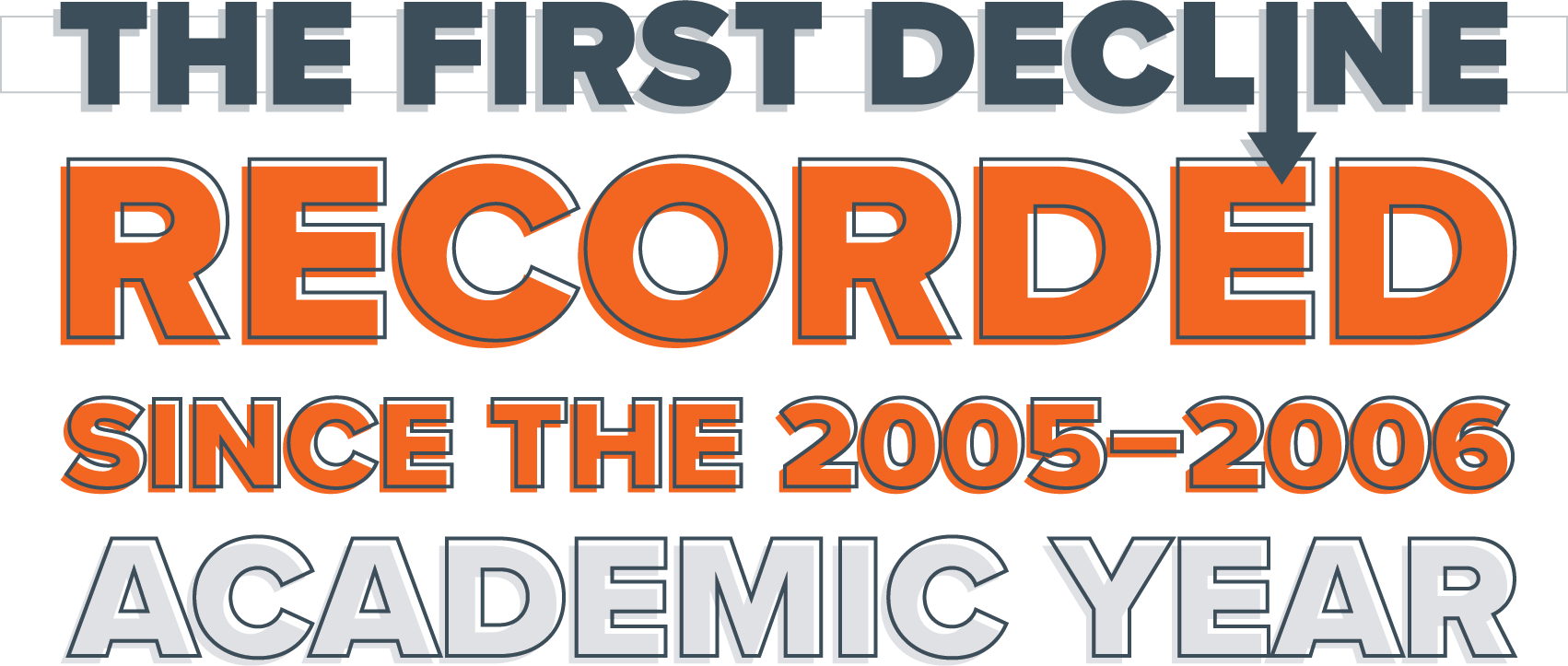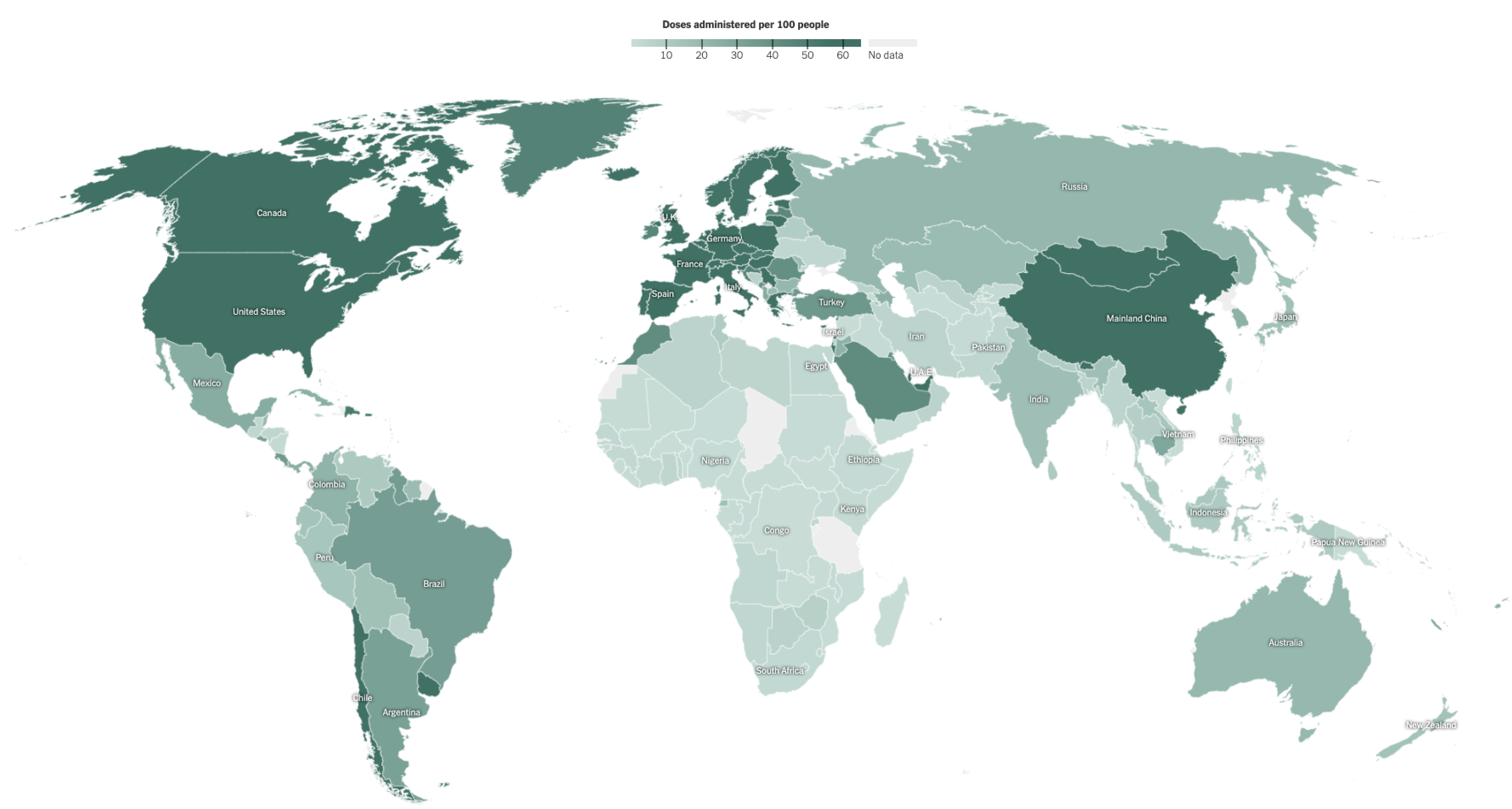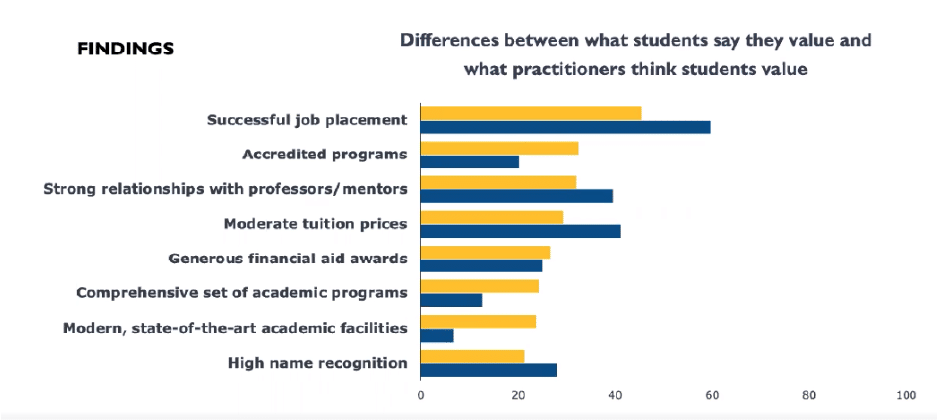Webinar: Oh, Behave! Why The Future of Higher Education Marketing is Behavioral
Webinar
Oh, Behave! Why The Future of Higher Education Marketing is Behavioral
If you find yourself continually searching for ways to make your institution’s marketing communications more effective, we’d encourage you to check out the recording of our recent webinar.
During the session, Spark451 President Mike McGetrick and Client Strategist Ed Flaherty discussed how we recently helped an elite graduate school boost email open rates by 94% by implementing a Behavioral Marketing campaign.
The duo also shared insights to help you:
- Learn the basic principles of behavioral marketing
- Discover the benefits of trigger-based communication flows
- Consider how you can incorporate this approach in your own campaigns
Download: 7 Winning Marketing Tactics You Haven’t Tried Yet (But Should)
We’re all still adjusting to the “new normal,” and for higher education marketers like us, that means adjusted marketing approaches to suit the new lifestyle and media consumption habits students formed during the pandemic.
As you work to update your institution’s communications plan, download “7 Winning Marketing Tactics You Haven’t Tried Yet (But Should)” for a little inspiration.
Check it out, and then, reach out to discuss specific strategies that will support your goals.
Boosting Email Engagement Using Behavioral Marketing
By Mike McGetrick and Ed Flaherty
Overview
Spark451 partners with several elite graduate schools across the U.S. to design and execute robust, personalized marketing campaigns. One such school, a client since 2015, partners with us on managing their prospect nurturing campaigns. Through the use of a segmented prospect communication strategy, Spark451’s campaigns with this institution typically yield average email open rates of 40%+ and click-through rates of 5% or higher.
On their own, these results are impressive. Over the last year, however, Spark451 implemented a Behavioral Marketing email campaign targeting website visitors, which blew these results out of the water.
Approach
The team at Spark451 are experts at delivering the right message to the right person at the right time; Behavioral Marketing is a methodology of doing just that. Spark451 created and implemented an email series triggered to send to visitors (tracked via a pixel) to a select group of pages from the university website. After 24 hours, a communication was automatically sent to the website visitor sharing additional, personalized information from the pages viewed while visiting the institution’s website.
Results
Implementing trigger-based web visit communications yielded:
94%
increase in email open rate
85% average open rate for each email
Over 90% open rate on an email
300%
increase in click-through rate
Click-through rates of 20%
Conclusion
As enrollment marketers, we like to control the narrative and cadence of our messaging in a linear flow. The problem is that our audiences are rarely ready to ingest our messages this way, preferring instead to do their own research when and where they are ready. By using behavioral targeting based on web visits, you can get the best of both worlds: Students do their own research, but you can supplement that with what you want them to know about that subject. For example, a visitor to your financial aid page should know about funding for graduate assistantships and unique scholarship opportunities.
We’d love to help you achieve a similar outcome using our technology stack or your current CRM. Reach out when you’re ready to discuss strategies and tactics we can implement to support your enrollment goals.
International Student Recruitment: The Renaissance Ahead
Blog
By Steve Kerge and Meryl McDonough
As a higher education professional, you already know the facts when it comes to international student recruitment. In short, it’s been a tough few years. The COVID-19 pandemic halted international travel, which affected both in-person recruitment as well as admitted students’ ability to enter the United States to attend their dream schools.
According to the latest annual Open Doors survey, the 2019–2020 academic year saw a 43% decrease in new international student enrollment in the United States, which contributed to a 1.8% decline in total international enrollments from the previous year—the first decline recorded since the 2005–2006 academic year.

What may surprise you is that many of the major factors impacting international student recruitment are not new. While the COVID-19 pandemic accelerated the decline in the international market, several other factors have been fueling the fire for almost a decade.
- Most widely known, the increased political and social unrest within the United States has painted us in a negative light for many students looking to pursue a degree here. This has also led to increased confusion around the rules and regulations within the United States, muddying the decisions for those considering to study here.
- Many foreign countries have long provided their students’ government-funded scholarships through national scholarship programs. Recently, many countries, such as Brazil (through their Brazil Scientific Mobility Program) and Saudi Arabia, have defunded these scholarship programs, making an education in the United States largely unaffordable.
- Over the past several years, the value of the U.S. dollar has increased substantially, again making it harder for international students to afford a non-funded education in the United States.
- Large pathway programs are beginning to emerge, making it harder for many U.S. schools to compete in this arena. These programs create partnerships with select universities in the United States and encourage International Student Recruitment Agents to send their students to the finite set of U.S. schools with which they have agreements.
- The competition within the international market has grown substantially and students are finding they have more options on where to pursue their degrees. Many countries, such as China, India, and Germany, which were once large exporters of students, are beginning to retain more of their own citizens. Additionally, countries such as Australia, Canada, and even the United Kingdom are enhancing their long-term visiting student options and making it easier for students to obtain a visa, placing additional strain on the international market for the United States.
- Finally, rankings continue to have a heavy influence on the international market, leaving a heavier burden on the smaller, more regional institutions.
At first, it’s easy to be bearish on the short-term future of international student activity when you consider the points above. However, we believe there’s an international renaissance on the horizon. Allow us to point out a few important facts that may help sway your opinion:
COVID Deferments Offer Great Potential
According to an iie research study published in November of 2020 40,000 students deferred their enrollment from Fall 2020 to a future semester.

When you factor in a combination of these deferments with the traditional new-student application activity we’ve already seen for Fall 2021, as well as what you can expect for Spring 2022 and Fall 2022, signs of growth begin to show.
COVID Vaccinations Are On The Rise

Source: The New York Times
U.S. colleges can begin to work with the U.S. government and those in other countries to offer vaccinations for incoming international students who otherwise might not be able to get vaccinated in their home countries or even in other competing countries.
The idea that an incoming student can test negative prior to coming here, test again upon arrival, and then get vaccinated can prove to be both career and life changing.
The U.S. Is Regaining Its Global Image As A Friendly Place
Based on recent reports, many U.S. admissions officers are feeling more optimistic about their ability to attract students from abroad, now that the new Biden administration is setting a more welcoming tone for international students than we’ve seen in the last several years. For example, in one recent article, Xiaofeng Wan, Associate Dean of Admission and Coordinator of International Recruitment at Amherst College in Massachusetts, told Inside Higher Ed that he believed families are beginning to feel more comfortable sending their children to the U.S. again. Also, according to Forbes, a recent poll by Morning Consult found that global opinion of the U.S. in general has improved quite significantly in the months since President Biden took office.
Positive Domestic Enrollment Trends
Historically, domestic enrollment trends have always been a strong indicator of where the international recruitment market is headed—though you can expect roughly a year of lag time. As vaccinations take effect and further empower U.S. institutions to return to fully in-person and on-campus environments, Spark451 strategists are hearing overwhelmingly optimistic outlooks on domestic enrollment for Fall 2021 from enrollment managers across the country—at institutions of all sizes and types.
"Over the last 14 months, Fisher College turned crisis into opportunity. Through virtual recruitment and a strong CRM (Element451), the College diversified its recruitment strategies to attract a strong applicant pool. These new strategies are paying dividends in the form of increased new student yield for the Fall 2021 semester and elevated student engagement for Fall 2022 and beyond!"
Robert Melaragni, Vice President of Enrollment Management at Fisher College
By and large, enrollment managers are satisfied with their Fall 2021 classes, and considering where they were just 12 months ago, they are bullish on the future for their schools as they re-engage domestic recruitment plans for Fall 2022.
Looking Ahead With Optimism
In spite of some recent interruptions in the market, international students remain a critical component of the ecosystem at most U.S. colleges and universities, and we expect that to continue well into the future. As the pandemic continues to recede and our nation’s political leaders continue to reestablish a more welcoming tone for foreign students, the Spark451 enrollment strategy team can’t help but feel especially hopeful about all of the new and emerging opportunities in this arena. In fact, we’re already hearing positive rumblings from the institutional leaders from across the nation with whom we speak daily.
“The international students we receive from more than 30 countries around the world add tremendously to the culture, diversity, and learning experiences of our entire campus community. Despite the challenges faced by so many during the pandemic, we have not stopped supporting our current international students and our global partners overseas in every way possible. Even though our numbers of international students from overseas declined last year, we did receive new international students who were already in the United States, and our numbers of new students are looking promising once again for Fall 2021. International strategic enrollment management does not happen by accident. It takes the right motives, people, a commitment to positively impacting the lives of our students and lots of hard work. Because of our shared values, we feel Western New England University is in a strong position to continue to educate a diverse group of international students for many years to come.”
Bryan Gross, Vice President for Enrollment Management and Marketing at Western New England University
Let's Connect
We look forward to helping your institution connect with talented students from around the globe in coming cycles! Reach out when you’re ready to discuss specific strategies and tactics to help you reach your international student recruitment goals.
Spark451 Named a Top Digital Agency in Raleigh
Spark451 is proud to announce that we have been recognized as a 2021 Top 30 Digital Agency in Raleigh by DesignRush. We’re honored to have been selected for this commendation, adding yet another mark of distinction that sets our agency apart in recognition of our outstanding work.
A respected online guide that evaluates companies in a variety of professional industries,
DesignRush analyzes thousands of agencies to determine the best qualified in each category, then shares this information with companies seeking support. Users can search the platform by location, expertise, reviews, and more, allowing them to explore a wide range of options based on their specific needs. DesignRush assessed Spark451’s reputation, marketing capabilities, and results, and awarded our agency this coveted ranking.
We look forward to living up to this recognition by continuing to support our partner schools with sound strategy and exceptional creative, producing powerful outcomes that exceed our shared goals.
Increasing Leads Without Increasing Spending
Spark451 has been partnering with a small public university and managing their digital media lead generation campaigns since 2018. For the first two and a half years of working together, the university mandated that we drive all inquiry traffic from our ads to an appealing, but standard, admissions inquiry page.
Due to the extremely small size of the institution, they were perfectly happy with the minimal results that emanated from these campaigns. However, the Spark451 team was very confident that we could improve the outcomes.

Launching a More Robust Site
We began suggesting a more effective solution to help the school significantly grow their prospect list. After more than a year of discussion, and a campaign launch in Fall 2020 that produced a grand total of 14 leads from September through December, our partner finally conceded. They took us up on our offer to build a campaign-specific landing page based on our industry best-practices approach, reallocating the budget for the remaining media spend to create a site that would make a greater impact on the audience.
We launched the new landing page in January 2021, utilizing powerful techniques for engaging students. Within one week, we had matched the total leads generated in four months on the prior page. The campaign just wrapped up, and the new page has produced 85 leads—a 500% increase in the same amount of time. And, since no additional money was spent, the cost per lead plummeted from more than $1,400 to just $250.
Expanding on Our Success
Our partner institution is thrilled with the changes we incorporated and with the improved results—which they had been convinced simply weren’t possible for them. We are preparing to begin a new targeted campaign this spring, and the first question they asked was whether we could create a version of our landing page specifically for this campaign, as well!
Let's Connect
We’d love to help you achieve a similar outcome. Reach out if you’re ready to discuss strategies and tactics we can implement to support your enrollment goals.
10 Takeaways From NAGAP 2021
As expected, the NAGAP 2021 Annual Conference took place online instead of its intended physical location in San Francisco, due to pandemic concerns. This didn’t stop the many passionate and dedicated graduate enrollment management professionals we affectionately call “GEMs” from sharing their experiences and challenges. And, suffice it to say, everyone expressed that it was “quite a year” as they walked a tightrope to make sure that students were receiving care and support that they needed, and that graduate enrollment was the revenue machine that college campuses needed to keep their enterprises afloat. We gained some new perspectives and enlightenment from graduate admissions colleagues, as well as from our Spark451 colleagues who hosted a webinar titled, “The Rise of Behavioral Analytics and Personas in Recruiting.”
1. Diversity, Equity, and Inclusion (DEI) is no longer just a movement. It’s an expectation.
Graduate enrollment managers are seeking new ways to provide access to graduate education for more students, but especially the underrepresented and people of color. One example of this trend is the use of holistic graduate admissions practices, as presented by Joseph Paris, EdD of Temple University. This involves the evaluation of the whole applicant, beyond typical GRE scores and GPA, to include attributes such as professionalism, concern for others, and multicultural competency. In a NAGAP survey, 95% of GEM professionals indicated a stated commitment to DEI from their institution was very or extremely important to them.
2. Domestic graduate enrollment saw an upside with the downturn in the economy.
Of GEM professionals responding to a NAGAP poll, 69% met or exceeded their enrollment goals for Fall 2020, with most of those opportunities being created online. GEM professionals reported using financial aid aggressively to increase headcount, given the current climate.
3. University administrators didn’t let the crisis go to waste.
As a result, underperforming graduate programs were targeted heavily, and 19% of GEM professionals reported the elimination of such programs.
4. Graduate enrollment management professionals are under pressure.
Budget cuts, layoffs, and financial instability at their institutions are sources of anxiety for many in the graduate admissions area. Moving ahead, uncertainty in the ability to recruit students is also a cause for concern. In fact, 45% of GEM professionals indicated that their working situation is very or extremely stressful.
5. We don’t always know what students value.
NAGAP survey findings also showed that what students say they value is often different than what GEM practitioners think they value. Practitioners tended to over-emphasize “successful job placement” and under-emphasize areas such as “accreditation” and “modern, state-of-the-art academic facilities.”

6. International enrollment remains a challenge.
In Fall 2020, the number of international student applications increased, but enrollment substantially decreased. Additionally, institutions reported that over 40,000 international students deferred to a future term. Travel advisories from the CDC and state-mandated restrictions all played a role in this trend. International graduate enrollment managers (iGEMS) will need to manage the situation carefully, bringing in students from abroad while balancing health risks and post-graduation opportunities.
7. Affordability and student debt loom large.
The vast majority of affordability and student debt discussions center around undergraduates, but the implications are enormous for graduate students, who owe a whopping $71,318 each, on average, with roughly 66% of that being directly from their graduate studies. In fact, graduate students borrow 37% of all federal student loan dollars. Institutions need to ensure that their students receive the appropriate value from their degrees to be able to repay those loans. Thankfully, the student loan default rate (at 9.7% for all students) is much lower for graduate borrowers.
8. Digital media has become a must-have marketing channel.
GEM professionals embraced digital marketing more than ever, with 60% indicating an increase in digital marketing spending over the last year. With its efficiency of targeting and trackable analytics, budget-challenged graduate admissions offices are embracing social media marketing, search engine marketing, and the full continuum of digital presence.
9. Graduate students value timely and personal outreach.
In our partner session with Element451, we discussed how we use personalization, behavioral targeting, and automation to create more timely and relevant communications. These techniques yielded a doubling of engagement rates from 40% to 80%. You can access the Spark451 NAGAP 2021 webinar, The Rise of Behavioral Analytics and Personas in Recruiting, here.
10. Virtual is nice, but in-person is what we seek.
The overall mood of the colleagues I spoke with was an appreciation for the convenience of the online conference, but an overwhelming preference to be in person at next year’s enrollment summit. So, with that… I’ll just say I hope to see you all in Chicago at NAGAP 2022 for some deep-dish pizza and a live, in-person experience.
To discuss more about the current state of graduate enrollment, or how Spark451 can help elevate your own recruitment practices, reach out to our team today!
Post-Pandemic Recruitment Planning
By Megan Brammer and Ed Flaherty
There is no denying the challenges many institutions have faced during the COVID-19 pandemic. Higher education experienced an accelerated growth of already-ongoing trends, such as test-optional admissions, value-forward marketing, and outcomes-driven decisions by consumers. Looking past the Fall 2021 enrollment cycle, colleges and universities have an unparalleled opportunity to expand on certain policies and practices implemented due to the pandemic. In fact, we firmly believe that with the right planning, institutions can not only survive—but thrive—long beyond the pandemic.
Here are a few key things enrollment managers like yourself should keep in mind when planning for the long term:
1. Continually innovate ways to identify new leads
In the last year, the shift in test requirements for admission and test-source list availability left many schools scrambling to supplement their normal name purchasing strategy. It will be imperative to expand and pioneer ways in which you build your enrollment funnel with sources outside of the typical name buy.
To get started, meet students where they are—online. Digital media lead-gen campaigns and influencer marketing are both great ways to capture new leads.
2. Promote contemporary career-focused programs
Capitalize on what’s hot. Pandemic-driven lockdown inspired many to explore ways in which they could help not only our first responders, but also help our world overcome the challenge we were collectively facing. This movement really resonated with Gen Z students, who have been described as “highly focused on having a positive impact on the world, which may be even more important than their jobs,” to shift their major and explore new careers in areas such as health care, nursing, public health, even politics. Many are even returning to school for a second degree in those disciplines.
To tap into this movement, try creating a multi-media and dynamic recruitment plan for trending careers. Utilize student outcomes stories and highlight job placements to connect with prospective students through storytelling. Make it clear how the degree programs you’re highlighting provided these individuals the credentials and experience to make an impact in their area of focus.
3. Keep your delivery formats nimble
After a year of hybrid or online learning, students expect institutions to implement virtual delivery formats seamlessly. At the same time, many students are itching to be in person on the campuses they love. When planning for your new normal, make sure you know your specific audiences and have the data to understand which learning methods they desire so you can meet their needs.
4. Don’t completely shift back to “what we used to do”
When the world shut down, so did all traditional recruitment tactics such as travel, campus events, etc. (all of which can carry a pretty hefty price tag). To compensate and carry our institutions over the Fall 2021 recruitment finish line, most enrollment managers reallocated their budgets and invested in non-traditional tactics such as ramped up digital media efforts, unconventional mailing touchpoints, and list buys from newly identified sources.
Now, as the world starts to shift back to a bit of normalcy and traditional recruitment activities resume, be sure to analyze the effectiveness of those non-traditional survival tactics and think twice before jettisoning them for the sake of regaining your travel budget. Leverage performance analytics and showcase the ROI they provided during a time of uncertainty and advocate for additional budget, if needed. In your effort to thrive, consider maintaining a mixed approach of traditional recruitment efforts and your most successful “survival tactics.”
Let's Plan Together
As your enrollment strategy and marketing partners, all of us at Spark451 are here to help you determine specific tactics that will keep your enrollment funnel full of qualified students for years to come.
Reach out so we can discuss specific ways your institution can prepare for the post-COVID recruitment era.
It’s the Final (Enrollment) Countdown
I recently had the great honor of co-presenting at the virtual Indiana ACAC Conference and offering my and Spark451’s collective insights on the student and parent trends we’ve been seeing over the prior eight weeks. A core part of the healthy discussion centered on how critical it is to take action now to meet your institution’s fall enrollment goals. A number of attendees reached out afterward and encouraged me to share some of these tactics with more of you in the field, which is what brings us all together here.
First, a little context: Spark451’s original research continues to show that many current high school seniors are still considering which colleges to apply to and attend. Also, many may be scrambling to adjust their plans once decisions and aid are distributed. These are no longer “late applicants,” rather, they are this year’s norm. Treat them as you would Early Decision applications—develop a fast track system to evaluate them, and if they qualify, get them admitted. Upon application submission, reach out immediately to make sure the family has filed for financial aid. You may even consider throwing your preferred financial aid cut off date in the trash and extending or eliminating it altogether!
Now, here are some proven strategies you can implement right away that have the potential to pay dividends over the coming weeks:
1. Don’t give up on your inquiry pool—engage them

We’ve all seen the news: The big-name schools are receiving more application submissions than ever before. But what these applying students and their families might not realize is that those same schools will not be admitting more students, and there will be plenty of rejection, waitlist, and deferral letters hitting homes and inboxes this month. If you are among the professionals at the some 2,500 smaller, regional schools throughout the country, you might be asking yourself, “What does that mean for me?” A lot of those non-engaged names on your list may soon be looking for an attractive financial aid package at a school close to home. Now’s the time to be sending out engagement communications and action-prompting tools for high school seniors. As examples, Spark451 utilizes tactics like Prospective Student Surveys, Express Applications, and web retargeting ads to re-engage those students and drive in late-cycle applications.
2. Check in with key stakeholders at your feeder schools

School counselors are just as stressed out as you are, or perhaps even more. They are the direct link to the families of your prospective students and can be your greatest ally right now, especially if students are not getting into the schools to which they applied. You’ve built strong relationships with these colleagues over years, so don’t let COVID get in the way of checking in on your friends.
3. Release your summer or fall opening plans as soon as possible

Students are eager for the traditional college experience, on campus and in the classroom. Give them hope by releasing your fall plans as soon as you can. Reassure students, and their families, that their experience at your school will have some sense of normalcy. The best way to do this would be to utilize video assets to show them what your on-campus experience was like before COVID. Also, plan homecoming events now, as alumni will wish to get back on campus as well. Your reopening will be a major event, and we can assist you with executing this.
4. Find a way to get admitted students to your campus safely

COVID has not completely diminished, so it is important that your admitted students and their families know they will be able to visit campus safely. Anti-melt efforts for admitted students are important during this non-traditional time. Get students excited by explaining how your campus will look in the fall, and get their families excited by showing them that their child will enjoy a safe campus experience.
Spark451 is ready and well equipped to assist you in reviewing your current strategies, developing new initiatives and seeing this through to the finish line. Feel free to reach out so we can discuss specific approaches for your institution.
Author's Note
As I put together this blog, I couldn’t help but to reflect more on the most trying year of our careers…
As we enter the traditional ACAC season, it appears that all of the regional conferences will be virtual again, and this concerns me when I think about the missed professional development opportunities for young staff members (some of whom have not yet even had a traditional fall travel experience!). In order to help replace these opportunities with in-house solutions, I suggest having your staff members attend webinars—we have a whole library available here on our blog at spark451.com.
As you review year-over-year reports, I suggest looking at day-over-day reports from this time last year. You may be pleasantly surprised. Evaluate what you did last spring, and reflect on what went right and what did not.
Consider the impact of a second straight spring without college fairs and what you can do to mediate that. Do you have a solid digital marketing plan in place for lead generation and nurturing campaigns? Are you using all of the right platforms? The strategy and digital media teams at Spark451 are happy to audit your activities and provide guidance.
Lastly, check in on your staff—it has been a challenge for them, as well. They may have children at home or in college, a spouse who has lost a job, or family and friends who contracted COVID. Take care of your people, and they will take care of their jobs. The time-honored staff retreats and in-office birthday celebrations are not the same in a virtual format, so make sure to connect on a personal level. Taking care of your staff, and yourself, is critical as the past year has taken its toll on all of us.
I hope you all continue to stay safe as clearer skies are on the horizon. Looking forward to seeing you all again soon.
Bill
Deliver a Powerful Virtual Commencement Experience
Graduation season is just about here! Even though we’re all grateful that national COVID-19 cases are finally dropping, you’re probably still feeling pressure to avoid a risky in-person event. Don’t worry—you can pull off an engaging virtual commencement experience, and we can help.
Spark451’s Virtual Commencement Support Package includes everything you need to deliver an event that is both memorable and special enough to satisfy your hard-working graduates and their families.
Check out the details, and then, reach out to discuss specific plans for your school!









